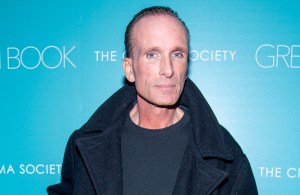It’s Christmas time and that means it’s time for the greatest film classics of the season to return to theaters and TV screens. Without a doubt, the most highly esteemed Christmas movie of all time is It’s a Wonderful Life. It seems like no matter where you go this time of year you can find it playing somewhere. That’s not a bad thing either. It’s a Wonderful Life is a classic for a good reason, the same reason it was mentioned by both director Frank Capra and actor Jimmy Stewart as being the favorite film either ever made. It’s life-affirming, heart-warming, and perfectly-made. The word “classic” could find no better companion.
Classifying It’s a Wonderful Life purely as a Christmas movie does it a disservice though. While the setting and themes of the movie certainly place it in this category, that’s not the only way to look at it. In many ways Capra’s 1945 classic helped to lay groundwork for a variety of beloved movie genres. It is a film that not only serves those seeking holiday cheer, but those fascinated by the tropes of fantasy, science fiction, and horror films. Really, it can be seen as a movie for fans of all genres. Here’s how…
Videos by PopCulture.com

It’s a Wonderful Life as Fantasy
This is certainly the most obvious alternative genre to place the film into. The movie is based around a single fantastical conceit. No, it’s not that people would give up their cash to save a bank, it’s the existence of guardian angels. The narrative opens with prayers making their way to heaven and a voiceover of Clarence and another angel. This serves as the framing device for the entire first half of the film, offering audiences a complete recap of George Bailey’s life and how he reached such dire circumstances. While the film openly accepts the existence of heaven and angels at its very start, these elements don’t interact with the narrative until the movie is more than halfway over.
When Clarence arrives it is just as George is about to commit suicide. Clarence interacts with him physically, falling into the river and needing to be saved himself. They pal around the town of Bedford Falls in such a way that makes it clear Clarence is no illusion or dream. Clarence also interacts with George metaphysically by offering him a glimpse of what the world would be like if he were never born. What he offers comes from a mystical, higher power and is so well realized that it just as real as Clarence is within the context of the film. In this way, It’s a Wonderful Life resembles a modern day fairy tale. It embraces a fantastical mythos and accepts its existence as part of reality. All the way down to the final moments in which a bell rings and Clarence gets his wings, It’s a Wonderful Life presents a wonderful fantasy.

It’s a Wonderful Life as Science Fiction
While much of what Clarence does can be embraced and understood as fantasy, there’s one key element that raises issues that belong to the realm of science fiction. That is the alternate reality revealed to George Bailey in which he was never born. Science fiction is a genre that concerns itself with possible understandings of the universe, typically based in technology. When Clarence shows George the alternate timeline, they interact with both the place and people. George’s mother doesn’t recognize him and he weeps over the grave of his brother. That this place physically exists suggests the existence of alternate histories and the butterfly effect of time travel. The means in which these ideas are evoked in It’s a Wonderful Life are fantastical, but the concepts themselves are pure science fiction.
Engaging in a simple thought experiment like “What if I had never been born?” is the heart of science fiction. It raises the question of how each decision and every person’s existence affects the flow of history. It also makes one think about how history functions like a tree with endlessly branching paths running in an infinite number of directions. You can certainly read this section of It’s a Wonderful Life on its surface as a means of salvation, but it’s also the seed of something far more complex. We can take the film as a science fiction movie, one that inspires us all to think about how everything we do might matter not just in the moment, but in perpetuity.

It’s a Wonderful Life as Horror
This is probably the most surprising re-definition of It’s a Wonderful Life, but have you watched the second act of this film? The entire sequence in which Clarence escorts George through a version of the world in which he was never born isn’t simply sad, it’s absolutely terrifying. The first half of the film carefully constructs the world of Bedford Falls. It cues audiences into the quirks of many minor characters, while helping them fall in love with George’s family. You really come to care for these people and their community. That makes what comes next such an absolute shock.
The death and destruction left in George’s absence is stunning. Every person in George’s life except for the despicable Mr. Potter is somehow worse off in his absence. Simple choices and incidents that he took for granted are the difference between a life well lived and tragedy for so many others. Capra’s depiction of this dystopian is alternate reality is oppressively dark in a manner that chills your soul too. What really transforms this segment into a horror film is how it illuminates the small changes that can radically alter your life. The difference between manslaughter, accidental death, and lots of destitution came in the marginal choices made by George Bailey. It’s a frightening reminder of how quickly our own lives can fall apart if not for the small differences made by friends and family.
So when you get a chance to catch It’s a Wonderful Life this year, whether it’s at a local theater or at home under a blanket, watch carefully. You might be astonished at the many layers of this classic film still left to be uncovered.
What other genres do you find reflected in It’s a Wonderful Life? Are you a fan of this holiday classic as well? Let us know in the comments below.
Most Viewed
-

JIMMY KIMMEL LIVE! "Jimmy Kimmel Live!" airs every weeknight at 11:35 p.m. ET and features a diverse lineup of guests that include celebrities, athletes, musical acts, comedians and human interest subjects, along with comedy bits and a house band. The guests for Tuesday, June 10 included Will Arnett, Jason Bateman and Sean Hayes ("SmartLess"), Bella Ramsey ("The Last of Us"), and musical guest HARDY. (Disney/Randy Holmes) SEAN HAYES, JASON BATEMAN, WILL ARNETT (Photo by Randy Holmes/Disney via Getty Images) -

L-R: Todd Lasance as AFP Liaison Officer Sergeant Jim 'JD' Dempsey, Olivia Swann as NCIS Special Agent Captain Michelle Mackey, Sean Sagar as NCIS Special Agent DeShawn Jackson, Tuuli Narkle as AFP Liaison Officer Constable Evie Cooper and William McInnes as Forensic Pathologist Dr. Roy Penrose in NCIS: Sydney episode 9, season 3 streaming on Paramount+, 2025. Photo Credit: Daniel Asher Smith/Paramount+






